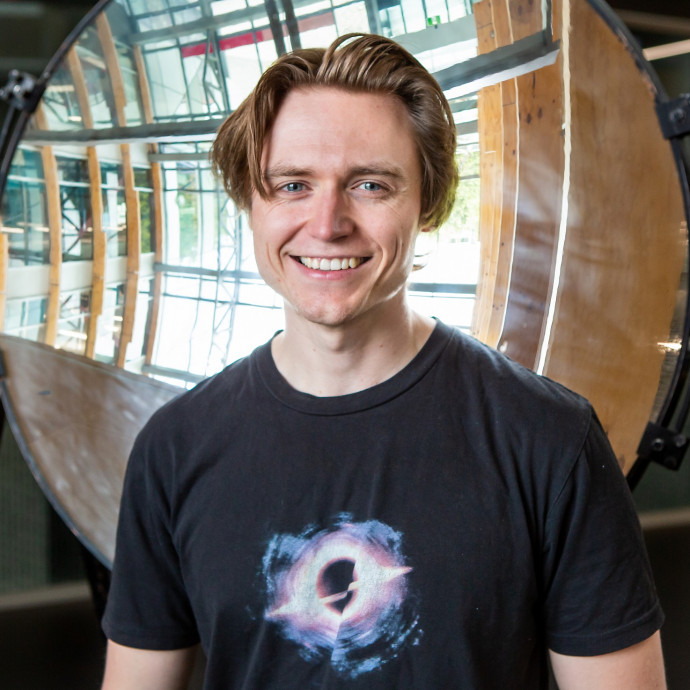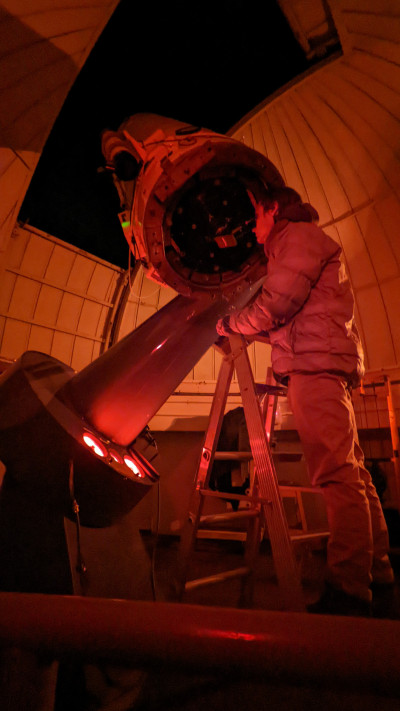Ryan Ridden-Harper

2022: Dr Ryan Ridden-Harper, University of Canterbury, has been awarded a Rutherford Foundation Postdoctoral Fellowship for research titled: ‘Revealing the mysteries of exploding stars with Ōtehīwai | Mt John Observatory’
Exploding stars, or supernovae, are spectacular phenomena in the Universe. They produce and spread the fundamental elements that we are made from. Since they explode with a predictable brightness we can use them to study the Universe’s history and how it expands over time. To improve our understanding of how supernovae explode, we must carefully examine how their brightness and colour change in the first few days post-explosion. Observing the first moments of a supernova explosion requires a network of telescopes across the Earth, alongside rapid-imaging space telescopes like NASA’s Kepler and TESS (Transiting Exoplanet Survey Satellite).

Dr Ryan Ridden-Harper in the lab. Image: Dr Andrew Ridden-Harper/Las Cumbres Observatory.
The Young Supernova Experiment, which currently networks telescopes from Chile to Hawai’i is the next big experiment in supernova science. It aims to unlock knowledge on the early dynamics of supernova explosions. The geographical location and pristine night skies of Aotearoa allow our telescopes to contribute unique insights into the dynamics of our Universe. To date however, we have no connection to this global experiment.
In his Rutherford Foundation Postdoctoral Fellowship, Dr Ridden-Harper will apply his extensive expertise in supernovae and data analysis to build capacity in supernova science in Aotearoa. Leveraging existing national and international connections, he will integrate Ōtehīwai Mt John Observatory in Takapō, Canterbury into the Young Supernova experiment, and the wider astrophysics community. Fuelling the next generation of insights, one starry night at a time.
